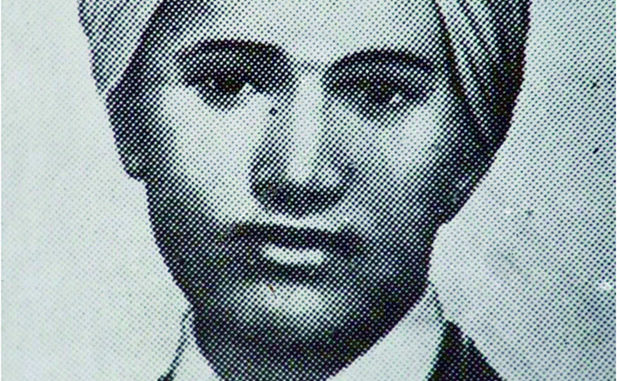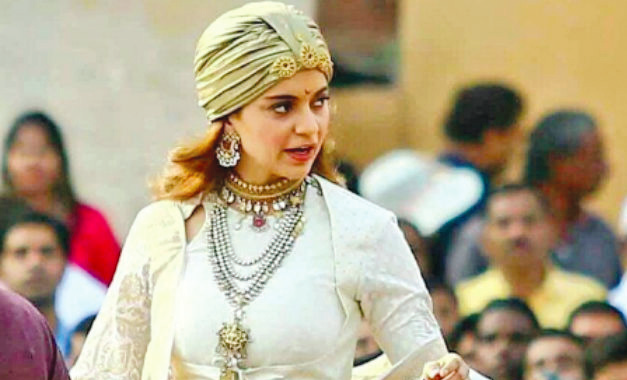
Bhagat Singh, Azad, Rajguru, Sukhdev, Ram Prasad Bismil, Gandhi, and Bose are few names that are synonymous with our struggle for freedom from the British. We owe our freedom to them. But apart from these hallowed names, there were thousands of others who too sacrificed their lives on the path of freedom. But unlike these big names, history didn’t do justice with them. Many of them have been forsaken by history and most of us don’t even know about them. This is an attempt to give those souls a tribute because their contribution to our freedom is by no means lesser than those who got their due.
Kartar Singh Sarabha
We all love Bhagat Singh, but only a handful know Kartar Singh Sarabha who Bhagat Singh himself considered his guru. Kartar Singh Sarabha was the main architect of the Ghadar revolution which aimed to incite a mutiny in British Indian Army during the thick of World War-I. Sarabha sought to take advantage of the war to uproot the British from India. Born in Ludhiana, Punjab in 1896, Sarabha went to the US for studies and established Ghadar Party in 1913.
In 1913, the party came out with a paper called ‘Ghadar’ which came out in languages like Pushto, Hindi, Punjabi, Bengali, Urdu, and Gujarati. Sarabha aimed to start a mutiny within British Indian Army and over 20 thousand Ghadar activists travelled to India from different countries of the world put plans in the motion. But the betrayal of an insider resulted in the arrested Sarabha and a few more. After the trial, the 19-year-old, Kartar Singh Sarabha was hanged on November 16, 1915, in Lahore central jail, the same jail where Bhagat Singh, Rajguru and Sukhdev were hanged.
Raja Mahendra Pratap
A royalty of Hathras, Aligarh, Raja Mahendra Pratap was one of the first Marxist revolutionaries in the country. In fact, Pratap was the president of first President of the Provisional Government of India formed in Afghanistan. In 1906, despite against the wishes of the family, he went to Calcutta to attend the Congress session and met several leaders of the Swadeshi movement.
But soon he realised that Congress won’t be able to help his cause of freedom. Therefore, he moved out of India in 1915 and via Switzerland, entered Germany. With help of Indian members of the Berlin Committee, he met Kaiser Wilhelm-II, the German emperor who promised him assistance to invade India via Afghan border. Pratap who had family relations with Jat Sikh states of Jind, Nabha and Patiala wanted to invade India through Afghanistan and later to use these states to crush the British in India.
But with Germany’s defeat in WW-I, his dream of invading India didn’t materialise. Pratap also tried to connect with Russians after Germans forsake him and his peers. He met Lenin as well. In 1932, Pratap was also nominated Nobel Prize in 1932. N.A. Nilsson, his nominator, said about him- “Pratap gave up his property for educational purposes, and he established a technical college at Brindaban. In 1913 he took part in Gandhi’s campaign in South Africa. He travelled around the world to create awareness about the situation in Afghanistan and India. In 1925 he went on a mission to Tibet and met the Dalai Lama. He was primarily on an unofficial economic mission on behalf of Afghanistan, but he also wanted to expose the British brutalities in India. He called himself the servant of the powerless and weak.” Today majority of land acquired by Aligarh Muslim University is donated by Pratap and his family.
Alluri Sitarama Raju
Born in a prosperous Kshatriya family in Andhra Pradesh in 1887, Raju left everything for the freedom struggle. In 1922-24, he led a failed yet important ‘Rampa Rebellion’ with the help of tribals. Raju was referred, “Manyam Veerudu” (Hero of the Jungles) by the local people. He took up the cause of the tribal people in the Agency areas, who were being harassed by British officials under the Forest Act, and led an armed rebellion against the British forces. Raju was trapped and killed by the British in the jungle in 1924.
Tirot Singh
Tirot Singh was one of the chiefts of Khasi people in the early 18th century who fought against the Britsh who tried to take control over the Khasi hills. Though the year of his birth is unknown, Tirot Singh fought the British in 1835 when British tried to acquire Khasi hills to extend their possession on Lower Assam areas.
Actually, the British wanted to construct a road through this area to connect Guwahati with Sylhet to save weeks of travel and malarious country. But Singh and his tribe objected the British occupation of the area and thus British tried to crushed their opposition which resulted in a bloody war between Khasi tribes and the British in which Singh sacrificed his life defending his tribe and land.
Pingali Venkayya
Venkaya was the man who designed the Indian national flag. Before independence, many flags were designed and used by different groups and in this process, Venkaya designed one version of flag for Indian National Congress which later became Indian flag after minor alterations post-Independence
According to The Hindu, “Pingali Venkayya was an authority in geology, agriculture and also an educationist who set up an educational institution in Machilipatnam. He, however, died in poverty in 1963 and was largely forgotten by the society and by his own party, the Congress.” A postage stamp was issued to commemorate him in 2009 and in 2011 it was proposed that he be posthumously awarded the Bharat Ratna. The outcome of that proposal is, however, not known.
Tanguturi Prakasam
Not many people know about this Andhra Kesari (Lion of Andhra). Prakasam was first the chief minister of Madras presidency and then chief minister in Andhra state. He started as a lawyer but gave up practice in 1921 to participate in the freedom movement. He rose to fame in 1928 during the protest against Simon Commission in Madras. The police had issued orders of shooting people in some areas. But Prakasam didn’t fear the orders and faced police by tearing open his shirt and daring police to shoot at him. This lone act of defiance won him the title of Andhra Kesari.
Veerapandiya Kattabomman
Almost 60 years before the rebellion of 1857, Kattabomman rebelled against the British and refused to pay taxes to them.As a chieftain of Palyekar community in the 18th century, Kattabomman waged a war against the British to protect his lands. He too died in the war against the British.
The Trio of Badal, Dinesh and Benoy
Bengal had given many freedom fighters and these three were also from there. They are known for their attack on the Dalhousie Square in Kolkata. Much like Bhagat Singh and his friends killed Saunders, the trio killed Col NS Simpson Inspector General of Prisons who was known for his atrocities on the prisoners. The trio of Badal Gupta, Dinesh Gupta and Benoy Basu decided not only to kill him, but also to strike fear in the hearts of the British by attacking the secretariat building- the Writers’Building in Dalhousie Square, Kolkata. On 8 December 1930, trio dressed as Europeans went to Writers’ building and killed Simpson. None of the three revolutionaries wanted to be nabbed; therefore Badal consumed poison whereas Benoy and Dinesh shot themselves. Badal was taken to hospital where he died on 13 December.
Surya Sen
Surya Sen popularly known as master Da because he was school teacher was a Bengali Indian independence activist. Sen is known for 1930s Chittagong armoury raid. Sen drew his inspiration from nationalist ideals during his college days on 1916 in Behrampore. In 1918, he was selected as the president of INC’s Chittagong branch. Later after college, Sen started recruiting young men to fight the British. In the late 1920s, Sen decided to free Chittagong from the British and thus formed a group of revolutionaries who carried out the infamous Chittagong armoury raid. On 18 April, Sen led a group which looted the armoury of the police. Their plan was to seize the arms and destroy the communication system of the city, thereby isolating Chittagong from rest of the British India. The group managed to loot the armoury, but failed to get the ammunition. The group hoisted the Indian National Flag on the premises of the armoury before escaping. But the British captured most of the revolutionaries but Sen in Jalalabad hills. Many died there while fighting the British.
Sen managed to escape and remained absconding for three years before being captured in 1933. Before he was hanged by the British, he was tortured beyond the limit.
Source: Indiatimes





Be the first to comment